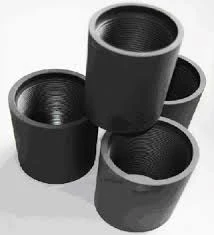- Afrikaans
- Albanian
- Amharic
- Arabic
- Armenian
- Azerbaijani
- Basque
- Belarusian
- Bengali
- Bosnian
- Bulgarian
- Catalan
- Cebuano
- Corsican
- Croatian
- Czech
- Danish
- Dutch
- English
- Esperanto
- Estonian
- Finnish
- French
- Frisian
- Galician
- Georgian
- German
- Greek
- Gujarati
- Haitian Creole
- hausa
- hawaiian
- Hebrew
- Hindi
- Miao
- Hungarian
- Icelandic
- igbo
- Indonesian
- irish
- Italian
- Japanese
- Javanese
- Kannada
- kazakh
- Khmer
- Rwandese
- Korean
- Kurdish
- Kyrgyz
- Lao
- Latin
- Latvian
- Lithuanian
- Luxembourgish
- Macedonian
- Malgashi
- Malay
- Malayalam
- Maltese
- Maori
- Marathi
- Mongolian
- Myanmar
- Nepali
- Norwegian
- Norwegian
- Occitan
- Pashto
- Persian
- Polish
- Portuguese
- Punjabi
- Romanian
- Russian
- Samoan
- Scottish Gaelic
- Serbian
- Sesotho
- Shona
- Sindhi
- Sinhala
- Slovak
- Slovenian
- Somali
- Spanish
- Sundanese
- Swahili
- Swedish
- Tagalog
- Tajik
- Tamil
- Tatar
- Telugu
- Thai
- Turkish
- Turkmen
- Ukrainian
- Urdu
- Uighur
- Uzbek
- Vietnamese
- Welsh
- Bantu
- Yiddish
- Yoruba
- Zulu
Understanding the Importance of Tubing Crossovers in Oil and Gas Operations
Understanding Tubing Crossover A Critical Component in the Oil and Gas Industry
In the oil and gas industry, efficient production and extraction methods are crucial for maintaining profitability and productivity. One of the significant components that play a vital role in these operations is the tubing crossover. This essential device is designed to facilitate fluid movement within wells and enhance operational flexibility. By understanding what tubing crossover is and its applications, stakeholders can appreciate its importance in today’s demanding energy sector.
What is Tubing Crossover?
A tubing crossover is a piece of equipment used in well operations to connect two different tubing strings or to change the direction of fluid flow in a well. This fitting allows for the efficient transfer of fluids between various sections of tubing, ensuring minimal loss during operations. The tubing crossover assembly often features a series of flanges, valves, and other fixtures, designed to manage and control pressure levels effectively.
The crossover can be employed in various scenarios, such as when transitioning from a wider to a narrower tubing string, enabling operations to adapt to different geological conditions or production needs. The design and materials used for these crossovers are critical, as they must withstand high pressures and corrosive environments typical of oil and gas wells.
Applications of Tubing Crossover
1. Fluid Management Tubing crossovers play a crucial role in fluid management by allowing operators to route production fluids from one tubing string to another. This is particularly useful when different sections of the well have varying pressure or chemical characteristics. By utilizing a crossover, operators can ensure that the correct fluids are directed to the appropriate production or storage areas.
2. Enhanced Production Efficiency The ability to efficiently manage fluid flow leads to enhanced production rates. By optimizing the routing and reducing the resistance in fluid flow, tubing crossovers allow operators to extract more resources in less time. This is vital in a landscape where maximizing production efficiency can significantly impact a company's bottom line.
tubing crossover

3. Adaptability in Well Operations The oil and gas industry is often faced with changing conditions, necessitating flexibility in operations. Tubing crossovers provide this adaptability by allowing for quick modifications to the flow path as needed. This can be especially important during workovers, maintenance, or when dealing with unexpected downhole conditions.
4. Safety and Control Safety is paramount in oil and gas operations. Tubing crossovers are designed with safety in mind, featuring robust construction and the ability to handle high pressures and chemical exposure. Additionally, they can incorporate shut-off valves to control flow and prevent leaks or spills, thereby enhancing operational safety.
Challenges and Considerations
While tubing crossovers offer significant advantages, they are not without challenges. Ensuring the integrity of these connections under varying operating conditions is paramount, as even minor failures can lead to significant financial losses or environmental hazards. Regular maintenance and inspection protocols are essential to prolong the life of crossovers and maintain operational safety.
Moreover, as the industry moves towards more advanced technological solutions, the design and materials used in tubing crossover assemblies may evolve. Embracing innovations such as enhanced corrosion-resistant materials and smart technologies for monitoring well performance could greatly improve the reliability and efficiency of fluid management in well operations.
Conclusion
In summary, tubing crossovers are integral components of the oil and gas industry that facilitate efficient fluid management, enhance production efficiency, and provide operational flexibility. Understanding their function and applications can help industry professionals appreciate their critical role in maintaining productivity and safety in increasingly complex drilling environments. As the sector continues to evolve, focusing on innovations will ensure that tubing crossovers remain effective and resilient in the face of new challenges.
-
Tubing Pup Joints: Essential Components for Oil and Gas OperationsNewsJul.10,2025
-
Pup Joints: Essential Components for Reliable Drilling OperationsNewsJul.10,2025
-
Pipe Couplings: Connecting Your World EfficientlyNewsJul.10,2025
-
Mastering Oilfield Operations with Quality Tubing and CasingNewsJul.10,2025
-
High-Quality Casing Couplings for Every NeedNewsJul.10,2025
-
Boost Your Drilling Efficiency with Premium Crossover Tools & Seating NipplesNewsJul.10,2025







